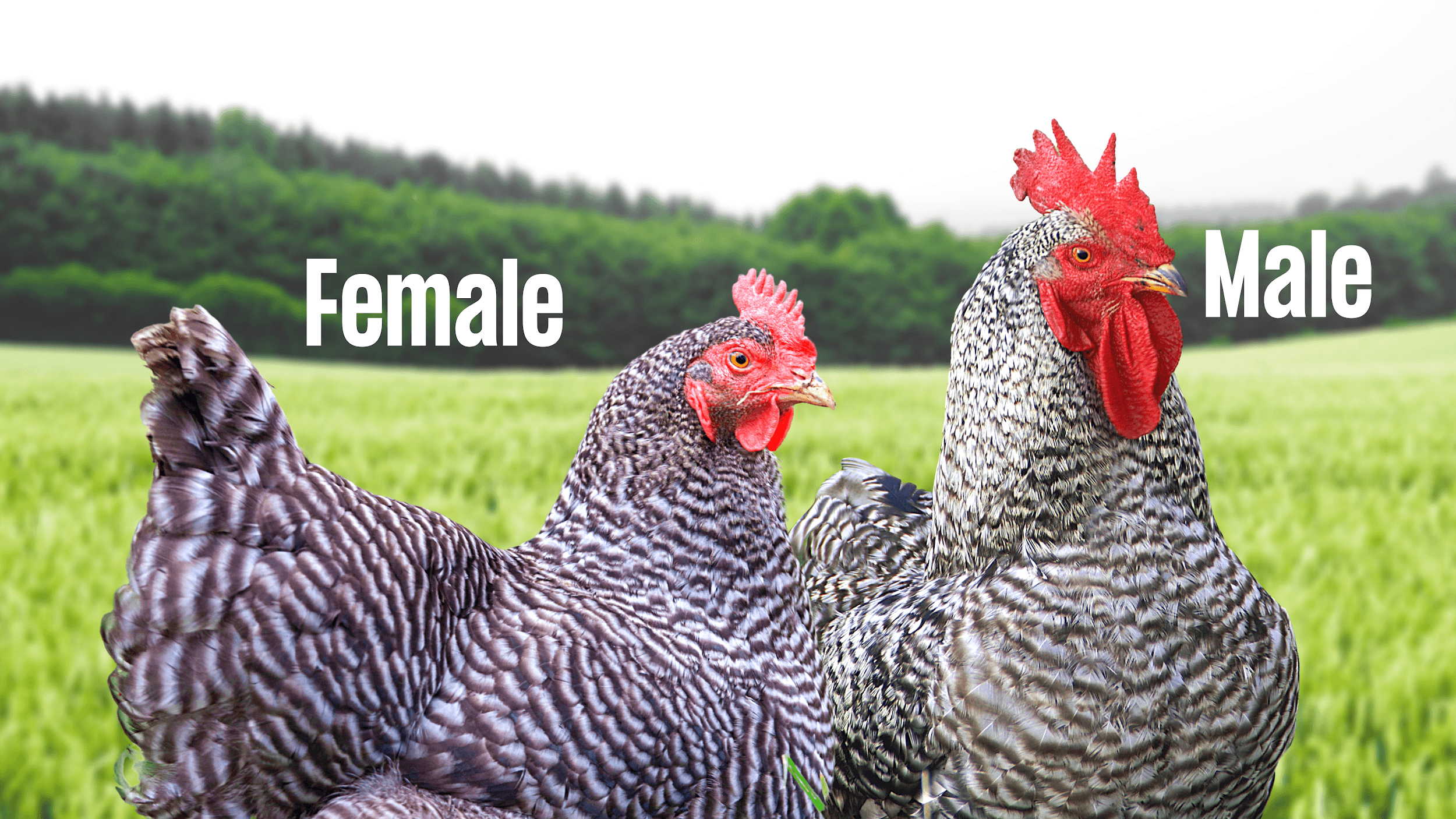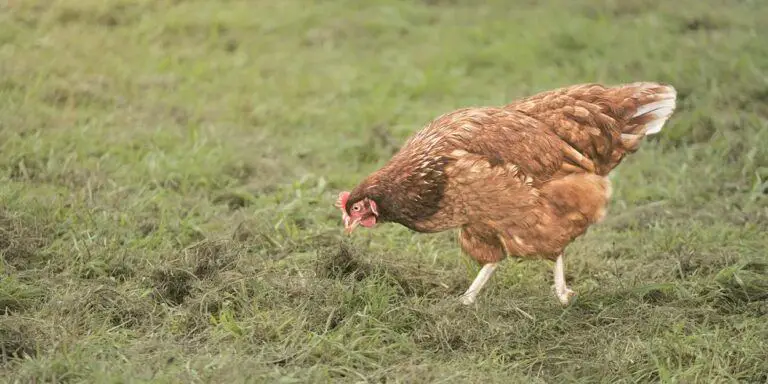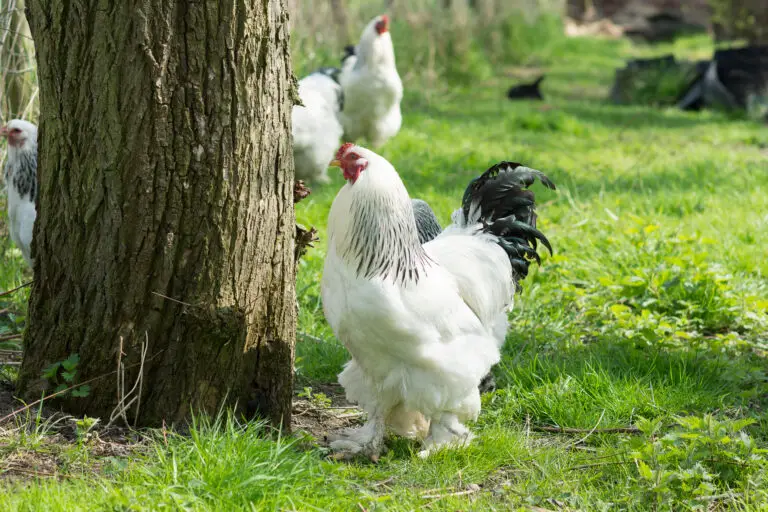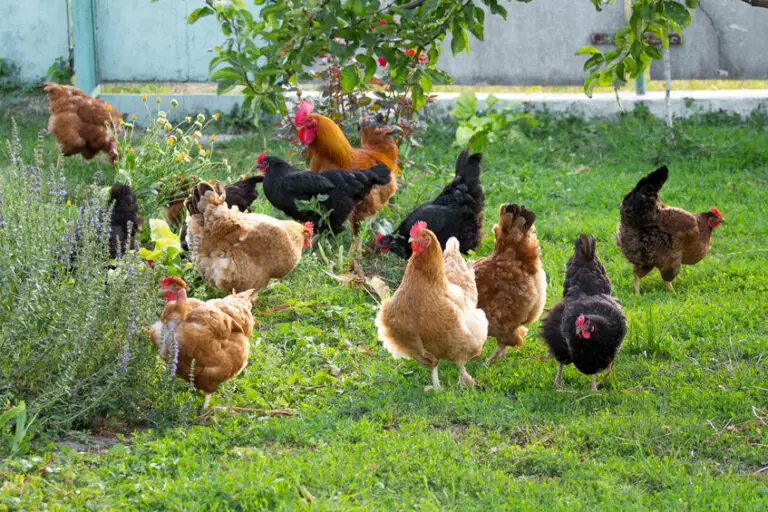Barred Rock Chicken Breed – A Comprehensive Profile
The Barred Rock Chicken breed (also known as Barred Plymouth Rock) is a great backyard chicken. Their sweet, laid-back nature has earned many “brownie points,” making them more of a pet than a source of food.
Whether you choose to raise this variety for eggs, meat, or for pure enjoyment, Barred Rocks won’t disappoint you.
Let’s look closer at everything there is to know about this chicken.

Overview
Barred Rocks are a variety of the Plymouth Rock breed. Other varieties that fall under the Plymouth Rock breed include White, Partridge, Silver-Penciled, Buff, Columbian, and Blue.
|
Purpose
|
Size (large)
|
|
Lifespan
|
Temperament
|
|
Hardiness
|
Eggs
|
|
Plumage
|
Pecking Order
|
History And Background
Barred Rocks are often confused with Dominiques because of their similar appearances. What’s interesting to know is the two are related. In the mid-1800s, crossbreeding between breeds produced a Barred Rock.
It’s not real clear on what the two exact breeds were, but many purport that it was a Dominique and either a Black Cochin, Black Java, Malay Game, Dorking, Langshan, Brahma, or Black Minorca.
With this in mind, the Dominique would be one of the parental breeds. This would account for the stunning similarities between a Barred Rock and a Dominique.
Dominiques have more of a subtle chevron pattern and a rose comb, whereas Barred Rocks have distinct bar patterns and a single comb.
The Barred Rock has been one of the most popular breeds embraced by Americans. In fact, during World War II, this variety of chicken was reported to be the most common here in the U.S. Today, this beautiful variety is commonplace in many backyard flocks.

Appearance: Male vs. Female
Barred Rocks have a distinctive look that makes them quite ornamental. Their plumage has bar markings/patterns of black and white. It’s the size of those patterns that help you to identify which are male and female.
Health Conditions
These are hardy chickens, and there’s really no health issues that you need to worry about. As with all chickens, the typical lice, mites, bumblefoot, and parasites may be something you’ll need to contend with.
Hatching
Hatching your own eggs is a real treat. If you have a rooster and a hen, odds are you will have fertile eggs to hatch. Now the hen should do all the work; hatch, sit, mother. However, if you don’t have a rooster, you’ll either need to purchase some fertile Barred Rock eggs or buy chicks/pullets/cockerels.
Hens reach laying age at about 18-20 weeks, so keep that in mind if you want to let nature take its course with your hen/chick/pullet and your rooster. Barred Rock hens are not overly broody, and trying to slip purchased fertilized eggs underneath one can be tricky.
Before buying the eggs, first, you’ll need to determine if you have a broody hen or not. If you have a hen that continually sits on her eggs and won’t leave the nesting box, you have a broody hen.
If all of your hens are out and about socializing without a care in the world about the nesting box, you most likely don’t have a broody hen. In that case, you can put your purchased fertile eggs in an incubator.
For purchasing fertile eggs, we recommend getting your eggs from a breeder. Although many small-scale hatcheries may be reputable, you just don’t know what you are getting, especially if you are buying online. Some hatcheries don’t have the chickens’ welfare in mind resulting in inhumane treatment.
Check out our article on hatching eggs!
Pros And Cons
Now we come to the part where we give you the good, bad, and ugly. By doing so, it helps you to know if this variety is ideal for you or not.
Frequently Asked Questions
“How long will a Barred Rock hen lay eggs?”
Healthy hens fed a quality laying feed should lay eggs up until she is about ten years old. As with any other hen, a decline in the number of eggs laid occurs when they are about 3 years old. Although laying declines, hens will continue to lay for another 7 years.
“Are Barred Rocks compatible with other breeds?”
The short answer is YES! Barred Rocks are in the middle of the pecking order. Additionally, they are not overly aggressive and tend to get picked on.
However, there’s just so much they will take before they retaliate. Compatible friends for Barred Rocks include Faverolles, Barnevelders, and Dominiques.
“Can I have a Barred Rock if I live in the far north?”
These chickens are cold-hardy and do well in colder regions. However, please keep in mind that they can suffer frostbite. Make sure you keep their coop draft free and warm with supplemental heat (radiant is recommended). Apply a frostbite salve or vaseline to their combs, wattles, and legs.
“What should I feed a Barred Rock chicken?”
Chicks should be fed a protein (18%) starter feed. For layers, a good quality layer feed (16% protein) with oyster shells should suffice. Roosters can also eat layer feed minus the oyster shells. However, the oyster shells do provide grit for roosters and does not need to be separated out.
More on the different types of chicken feed can be found here.
Make sure that your chickens have access to fresh water at all times. Water should be changed daily.
“How much does it cost to buy a Barred Rock chick?”
Prices vary depending on where you purchase your chick from. Typically the average price ranges around $5.00 per chick. We do recommend purchasing your chicks from a breeder rather than a hatchery or in a store.
However, having said that, your local farm store CAN be a good place to purchase them. If you’re concerned about where they came from, ask the staff there to find out where the chicks came from.
Closing Thoughts
We hope we’ve provided a detailed overview of this magnificent breed! Having raised Barred Rocks ourselves, we can vouch for all the information covered here and highly recommend them. It’s a popular breed so, depending on where you live, there is a good chance you’ll find them in your area.
Thanks for stopping by and happy ‘chickening.’







I have a barred rock. It is 4 months old and has both male and female traits and characteristics
as stated in your list.
Help. Please.
Hello and my apologies for such a late reply! I was away from my site for a while. I hope you still have your barred rock, and I’d love to hear what happened! By now it’s likely laying eggs or waking you up in the AM with it’s crowing. It can be hard to determine if you have hen or rooster with some chickens/breeds until closer to 6 months old. I have an aracauna (now 6 mos old) that we didn’t know if would be a hen or rooster as it had so many male looking characteristics. But just in the past few weeks, she’s started laying eggs (which we are grateful for!) Best of luck to you with your Barred Rocks.
New to Chickens, have 4 Barred Rock hens, 2 Gold Star, and 2 Long Island Reds.
Loving the experience. One hen just stared laying eggs early, not due for 2 more weeks with the rest of the flock.
Thanks for the great information.
kristopher in Tucson, AZ.